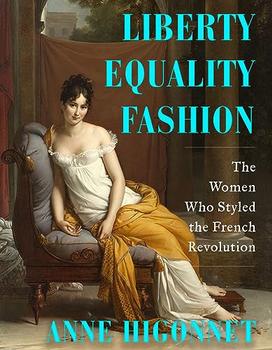Summary | Excerpt | Reading Guide | Reviews | Beyond the Book | Read-Alikes | Genres & Themes | Author Bio

Critics' Opinion:
Readers' Opinion:
First Published:
Oct 2018, 240 pages
Paperback:
Dec 2019, 256 pages
 Book Reviewed by:
Book Reviewed by:
Jordan Lynch
Buy This Book
This article relates to News of Our Loved Ones
 News of Our Loved Ones is a poignant tale of family and loss during World War II. The story follows members of the Delasalle family and their close friends, focusing in particular on Geneviève, the eldest daughter. Geneviève's story stretches from her hometown of Caen, France to Paris, and then eventually to America as she makes her home there with her new husband, Lieutenant Peter Miller, an American soldier who was stationed in Paris. His and Geneviève's whirlwind romance is reminiscent of the many wartime weddings between American troops and the European women that became known as "war brides."
News of Our Loved Ones is a poignant tale of family and loss during World War II. The story follows members of the Delasalle family and their close friends, focusing in particular on Geneviève, the eldest daughter. Geneviève's story stretches from her hometown of Caen, France to Paris, and then eventually to America as she makes her home there with her new husband, Lieutenant Peter Miller, an American soldier who was stationed in Paris. His and Geneviève's whirlwind romance is reminiscent of the many wartime weddings between American troops and the European women that became known as "war brides."
While the term "war bride" can be used to describe any woman who marries a foreign serviceman during a time of conflict, it is most commonly used in reference to brides from the two World Wars, as it was a remarkably common phenomenon at that time. According to the Red Cross, over the course of World War II, 65,000 American soldiers married European women, about 50,000 of whom were British. A great many more married after the war; for example, while estimates vary widely, it would seem that there were more than 30,000 Japanese war brides.
The large number of brides belies the difficulty of getting married to an American serviceman during wartime. Although troops were encouraged to be friendly with the locals, romantic attachments were frowned upon by military brass as they were seen as a distraction from the soldier's service and efforts towards the war. Many men were undeterred by this stigma, but committing themselves to their foreign sweetheart in marriage required jumping through a number of hoops. The serviceman first had to get written permission from his commanding officer at least two months before the wedding date. The commanding officer's approval was based on many factors, including a personal interview with the bride, as well as information gathered from a character investigation. In Britain, the Red Cross was responsible for learning about prospective brides; Red Cross members would visit the home of the bride and speak with family and friends to ascertain whether or not the bride-to-be was a woman of good standing. On the groom's side, similar interviews were performed, as well as checks into the groom's finances to ensure that he could support his new bride.
It was often the case that the commanding officer disapproved of the wedding and would deliberately put off interviewing the bride or initiating the investigation into the bride and groom's backgrounds. Likewise, if any of the information gathered from the character investigations seemed suspect or inappropriate, the commanding officer could deny permission. Servicemen could get married in secret without their officer's permission, but at the risk of being court-martialed, and it's likely that many budding romances died when the serviceman received pushback from his superiors.
Nonetheless, enough American servicemen were married to European women that in December of 1945, Congress passed the War Brides Act, allowing spouses and children of American servicemen to immigrate to America. The United States had a strict quota on the number of immigrants allowed to enter the country each year, but the War Brides Act allowed these women and their children to enter the country outside of this quota in order to be with their husbands. The first official sailing of war brides was aboard the S.S. Argentina in January 1946. The ship traveled from Southampton to New York City and carried 452 war brides, 173 children, and one war groom (a Belgian man who married an American nurse) to their new home. For many of the women, America seemed like a different world, not just one that remained physically unscarred from the horrors of the war, but one full of conveniences and a culture that was unlike anything they'd ever known. While some surely faced difficulties making the transition, many women flourished, making the most of their new homes and their new lives and moving on from the atrocities of the war they'd endured.
Geneviève is one of these latter women, and although she is initially overwhelmed by her new reality, she comes to accept and embrace it. DeWitt's description of Genevieve's life many years after the war, as well as the description of her complex relationship with her daughter Polly, provide a fictional but believable look at how the thousands of World War II war brides adapted to their new lives in America and raised the post-war generation.
War brides on the deck of the SS Argentina, courtesy of J.H. Graham
Filed under People, Eras & Events
![]() This "beyond the book article" relates to News of Our Loved Ones. It originally ran in January 2019 and has been updated for the
December 2019 paperback edition.
Go to magazine.
This "beyond the book article" relates to News of Our Loved Ones. It originally ran in January 2019 and has been updated for the
December 2019 paperback edition.
Go to magazine.




Your guide toexceptional books
BookBrowse seeks out and recommends the best in contemporary fiction and nonfiction—books that not only engage and entertain but also deepen our understanding of ourselves and the world around us.